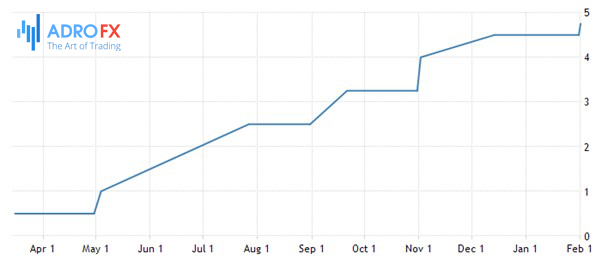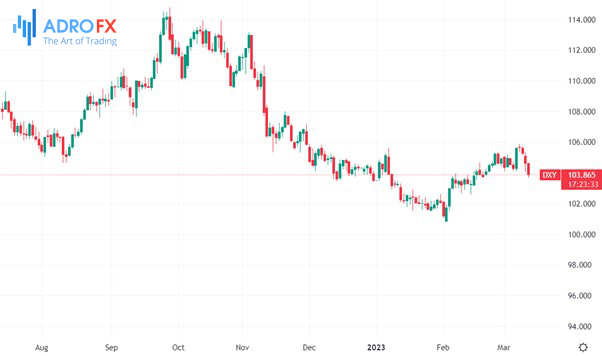Jobs Report Signals Fed Rate Hike in March | Daily Market Analysis

Key events:
- Eurozone - Eurogroup Meetings
The U.S. economy created 311,000 new non-farm jobs in the second month of 2023, according to data released on March 10 by the Labor Department. The figure was markedly higher than economists' consensus forecasts, which had suggested an increase of 225,000 jobs. January's job growth was revised slightly downward: from +517,000 to +504,000 jobs.

The unemployment rate in February unexpectedly rose to 3.6% from 3.4% in January. Economists had forecast that the figure would be unchanged from the previous month.
Average hourly earnings rose 0.2% in February versus January. This was below the forecast estimates (+0.3% m/m). On a year-to-year basis, hourly wages rose 4.6% y/y. The data was lower than forecast (+4.7% y/y) but higher than the January figure (+4.4% y/y).
Employment increased above forecasts. The 2-month average for nonfarm employment growth was 407,500 jobs. The only time the 2-month average was higher was in July and August of last year. The pace of wage growth slowed relative to expectations, but unemployment rose unexpectedly. In the construction industry, employment rose by 24,000 jobs in February, even amid a downturn in the real estate market. This industry is usually the first signal of serious economic problems. We see no such signal now, but February was an unseasonably warm month in the US, which is positive for employment not only in construction but also in leisure and tourism (+105k jobs in February) and retail sales.

The data did not bring any clarity as to what decision the Fed might take at the end of its meeting on March 22: a 25bp rate hike or a 50bp rate hike. Most likely, the market will prefer to wait for the March 14 report on consumer inflation in February to define its assessment of the Fed's future actions more precisely.
So, what are money market expectations? The federal funds rate futures market now has a 45% chance (56% the day before) of a 50bp rate hike in March. Expectations for the 2023 peak rate have also weakened: it is now 5.4% in July, and 24 hours ago it was above 5.5% in September (no August rate meeting is scheduled). The year-end rate is implied at 5.09% (5.32% was at the end of March 9).

As for the market reaction, stocks in the U.S. and Europe were noticeably cheaper on Friday. As investors here are focused on Silicon Valley Bank (SVB Financial Group) problems, the minor dynamics are separate from the reaction to the labor market report. Treasury bond yields are falling very significantly along the entire length of the curve. At the same time, ten-year yields have fallen below year-earlier levels and stand at about 3.72%, although at the beginning of the month, the index was actively trying to clamp above 4%. Two-year yields are showing the strongest two-day drop since 2008. The dollar fell sharply as Treasury yields fell. The dollar fell to 103.86 points, its lowest level since February 22.

The overall market reaction implies that investors refuse to consider the risks of a 50bp rate hike in March to be elevated. However, the turbulence caused by the risks associated with SVB Financial Group prevents a more transparent assessment of the market reaction exactly to the employment statistics.








